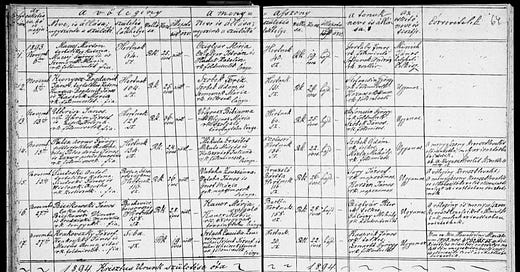Latin, Hungarian, and Slovak, Oh My!
When I began researching my Eastern European heritage, language became the first barrier. I quickly realized that my Bachelor’s degree in French would not help me understand Slovak. And then I learned that genealogical records from that region are also written in Latin and Hungarian. I was intimidated, so I didn’t put much effort into that part of my family tree for many years.
In 2023, I discovered a course through Family Tree University called “Find Your Czech and Slovak Ancestors,” taught by Lisa A. Alzo. It was a game-changer. It provided a wealth of information for not only finding records but also understanding them.
I learned that since my family was Catholic, church records were often recorded in Latin. Due to changes in political power, some types of documents would be written in Hungarian and some documents would be written in Slovak.
Once I found these records, I needed a way to understand what they said. That’s where the FamilySearch Research Wiki came into play.
Here are several resources from the Research Wiki that have helped me:
When I found my great-great grandparents’ marriage record from Hertnik, Slovakia in 1893, I was able to use the guides above to decipher what I had discovered.

This record was written in Hungarian, so I used one of the reading aids to translate the column headings first: Entry Number; Date of Marriage; Name and occupation of groom and bride; Birthplace, residence and house number; Religion; Age; Single; Widowed; Name of Witness and Occupation; Name of officiating clergy; Number of announcements or dispensation or other impediments in the banns; Comments.
Once I had the context of the column headings, I could begin to understand the record of my ancestors.
24-year-old Gyorgy Palsa doruv, son of Janos Palsa doruv [deceased] and Zouzsana Lazur, married 22-year-old Erzsebet Mikula, daughter of Matyas Mikula and Juliana Kolosvary [sic] on 13 November 1893.
There are still a few gaps in my transcription of the record, due to difficulties in reading the handwriting and my basic knowledge of Hungarian vocabulary. If you have experience reading Hungarian handwriting and can help transcribe the rest of the record, you can view it (entry 14) here.
Thanks for reading!
This post was inspired by 52 Ancestors in 52 Weeks.




